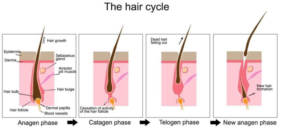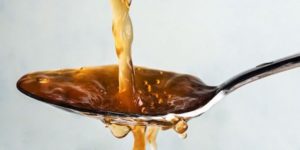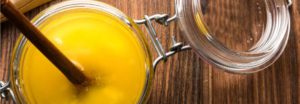Every hair on the head is in one of the 4 phases:
- Anagen Phase: In the phase, your hairs are connected to the blood vessels and are in the growth phase. This phase lasts anywhere in between 3-5 years.
- Catagen Phase: A short stage after the anagen phase, which signals the end of active hair growth, the hair gets detached from the blood vessels. At the end of this phase, the hair becomes dead. This phase lasts 2-3 weeks.
- Telogen Phase: In this phase, the hairs are pushed from the follicles slowly to start a new anagen phase, this is the resting phase for the hair follicles. It lasts up to 100 days.
- Exogen phase: In this phase, the hair is loosely attached to the follicle and the major shedding happens. This phase can last up to 70 days.

This is to explain that at a moment, most of the hairs in the head will be in the anagen phase, and a few in the remaining 3, hence shedding is a normal process. And losing 100 hairs/day is a normal phenomenon for anybody.
How balding happens
When hair falls out of the follicles, some follicles shrink and hence the next anagen phase becomes smaller and the hair becomes less firmly attached to those follicles. After a few cycles, the follicles shrink so much that the hairs are not able to remain attached to the follicles.
With smaller anagen phase and thinning of hairs the frequency and the amount of hair fall increases and we start going bald.
So in particular hair fall is not the problem but the thinning and shrinking of the hair follicles is what causes baldness. And whatever method we try to control hair fall, the hairs that are in the catagen phase, will eventually come out with time and hence an improvement can only be measured after 3-4 months.
What causes the hair follicles to shrink?
The testosterone in the human body is sensitive to be converted into DHT(DiHydroTestosterone) which is important for the transition of boys into adulthood, it gives a deeper voice, body muscles, hairs on the body and the face. But DHT causes the downsizing of the follicles of the hairs on the head and is the main hormone responsible for baldness in males.
The conversion of testosterone to DHT occurs in the presence of a hormone called 5 alpha-reductase, which is present near the follicles of the hairs in the head. The more the 5 alpha-reductase the more testosterone gets converted into DHT.
When people say that baldness runs in the family, it’s because of the high levels of DHT’s that are transferred from one generation to another. So if your parents or grandparents had a high level of DHT it’s very much likely that you will also have those. So, there is not much that we can do about this since it’s mostly genetic, other than the widely popular anti-DHT medications that work very well but also get along with a lot of side effects which we will cover in the later part.
What if the baldness doesn’t run in my family but I am losing my hairline?
Other than high levels of DHT, the things that affect the loss of hairline are:
- Micronutrient deficiencies: They may arrive due to a medical condition, genetic factors, certain dietary practices, or staying in a large calorie deficit for a long time. Some common nutrient deficiencies that cause hair loss are:
- Vitamin B-3 or niacin: Causes a decrease in hair density
- Essential fatty acids: Especially omega-3, causes loss in scalp hairs and eyebrows
- Iron: A very common cause for hair loss, vegetarians are most prone to this deficiency because of lack of dietary iron sources
- Zinc: A very common one too, again vegetarians are most prone to this deficiency.
- Biotin or vitamin B-7: Responsible for hair and nails growth, deficiency of biotin for a prolonged time causes hair loss.
- Overproduction of sebum: If your hairs remain too oily or greasy, that’s because of the overproduction of sebum. Extra sebum also blocks the pores of hair follicles and hence gets detrimental for hair growth if not managed well. Washing hairs more often is the way to manage high amounts of sebum on hairs.
- Stress-induced hair fall: Higher levels of stress or cortisol in the body disturbs the normal anagen to exogen cycle of hair and causes thinning of hairs by shortening the anagen phase.
- Rapid weight loss: This shocks the hair follicles which causes shedding but usually all the hairs come back once the weight gets stabilized.
But if the baldness is induced by high levels of DHT not much can be done about it other than having anti-DHT pills and applying anti-DHT solutions on the hairs. The most common medication prescribed in these cases is 1 mg of finasteride and a minoxidil solution to apply on the hairs. If the hair fall is recent(in the last 2-3 years), these medications show results in 3-4 months with a recovery of hairs and the effects only last till the person is on medication, these medications seem to work for most people but there are several side effects that they can cause like loss of libido, erectile dysfunction, and other sexual problems. The side effects are found in 5-7% of people who are on finasteride, and for about 2% of people, the side effects are unrecoverable. Other side effects also include insomnia, depression, and anxiety. I would never recommend someone going on these medicines no matter how promising the results are.
Some natural DHT/5 alpha-reductase inhibitors
There are a few natural DHT blockers that you can try if the problem is because of high levels of DHT:
- Stinging nettle/bichhoo ghas: Stinging nettle may work by inhibiting the 5-alpha reductase enzyme that produces DHT while maintaining levels of testosterone to reduce hair loss.
- Pumpkin seed oil: The oil contains phytosterols that can inhibit 5-alpha reductase to keep DHT levels in check.
- Saw palmetto: Saw palmetto is one of the most popular and best herbal DHT blockers in the country and is available in many forms including powders and extracts.



